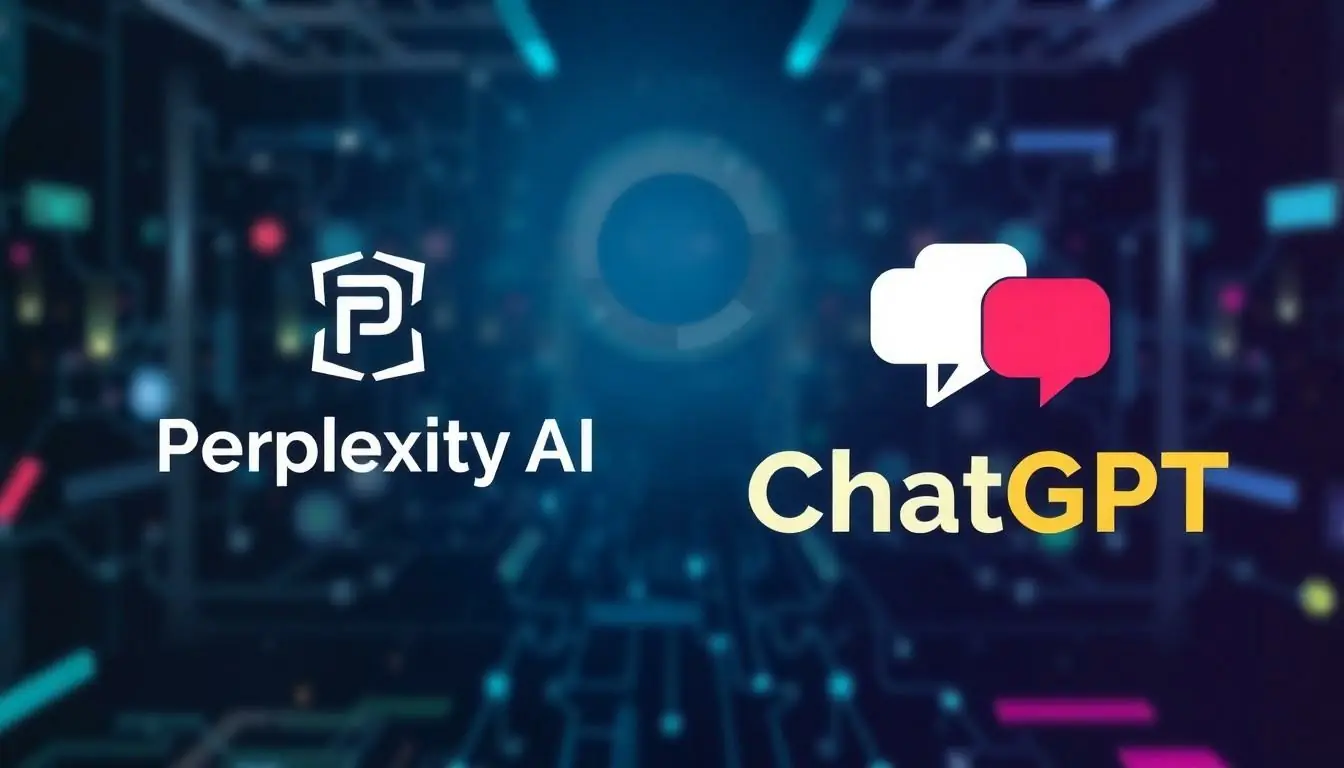In the ever-evolving world of artificial intelligence, two heavyweights are making waves: Perplexity AI and ChatGPT. Both promise to revolutionize how we interact with machines, but they each bring their own unique flair to the table. Imagine a friendly robot that can crack jokes while answering your questions—now you’re getting the picture!
Table of Contents
ToggleOverview of Perplexity AI and ChatGPT
Perplexity AI and ChatGPT are two noteworthy advancements in artificial intelligence. Both systems enhance human-machine interactions while showcasing unique features.
Definition of Perplexity AI
Perplexity AI is a conversational search engine designed to assist users in finding accurate information. This AI utilizes a blend of natural language processing and factual databases, enabling it to offer detailed responses to inquiries. Users can ask questions in conversational language, and Perplexity AI delivers contextually relevant answers backed by reliable sources. The platform excels at breaking down complex subjects into digestible information, fostering an intuitive user experience.
Definition of ChatGPT
ChatGPT is an advanced language model developed by OpenAI. It generates human-like text based on the prompts it receives, making it versatile in a variety of applications such as customer service, content creation, and programming assistance. This AI is trained on a diverse dataset, which allows it to understand and respond to a wide range of queries. Users can engage with ChatGPT in dialogue, where it maintains context and provides coherent, contextually appropriate replies. Its ability to generate creative text makes it a valuable tool across industries.
Key Differences Between Perplexity AI and ChatGPT

Perplexity AI and ChatGPT exhibit distinct features, shaping their unique functions in AI advancements.
Architecture and Design
Perplexity AI functions as a conversational search engine. It relies on natural language processing alongside factual databases to deliver accurate information. ChatGPT, in contrast, utilizes an advanced language model. That approach enables it to generate coherent and human-like text. While Perplexity AI emphasizes information retrieval, ChatGPT focuses on dialogue continuity, ensuring context is maintained throughout conversations. Both architectures optimize AI response effectiveness, yet their designs cater to different user needs.
Use Cases and Applications
Perplexity AI suits informational queries, helping users access data-driven answers. Its design excels in breaking down complex subjects into digestible content. On the other hand, ChatGPT finds its strength in conversational applications. It generates text for customer support, creative writing, and more. The versatility of ChatGPT allows it to adapt across various domains. Both systems contribute significantly to enhancing user experiences, showcasing the diversity of AI technologies.
Performance Comparison
Both Perplexity AI and ChatGPT demonstrate varied strengths in performance metrics. Each technology suits different user needs.
Response Quality
Perplexity AI excels in providing precise, fact-based answers. Users receive contextually relevant information quickly. ChatGPT focuses on generating human-like text, ensuring conversations feel natural and engaging. It delivers responses that maintain conversational flow. Research indicates that users prefer Perplexity AI for straight facts and ChatGPT for creative tasks. Both platforms cater to distinct use cases, enhancing user experiences with tailored responses.
Speed and Efficiency
Speed remains a key differentiator between the two. Perplexity AI swiftly retrieves factual information, processing user queries almost instantaneously. This quick response time proves advantageous for users seeking immediate answers. In contrast, ChatGPT takes a moment longer as it constructs coherent dialogues. Overall, both systems offer valuable efficiency, with Perplexity AI favoring information retrieval and ChatGPT prioritizing conversational context, fulfilling different demands effectively.
User Experience
User experience plays a crucial role in determining the effectiveness of Perplexity AI and ChatGPT for different tasks. Both platforms offer unique interfaces that cater to user needs in specific contexts.
Interface and Usability
Perplexity AI features a clean, user-friendly interface designed for quick access to information. Navigating through its search functionalities is straightforward, allowing for efficient data retrieval. Users benefit from easy interaction with its question-and-answer format. On the other hand, ChatGPT’s interface focuses on creating a conversational feel. Engaging with the model unfolds naturally, ensuring users can follow along with dialogues. Customization options enhance usability, letting users personalize their experience. Each platform effectively addresses user expectations while prioritizing simplicity in their design.
Accessibility
Perplexity AI is designed to be easily accessible across various devices. Its web-based interface ensures compatibility with smartphones and tablets, making information retrieval convenient. Users looking for immediate answers find its adaptable format beneficial. In contrast, ChatGPT offers accessibility through integrations with third-party applications. This flexibility allows for diverse use cases, such as chatbots and virtual assistants. Furthermore, users can access ChatGPT via platforms like websites and messaging apps, further enhancing its reach. Both technologies strive to provide seamless experiences for a broad range of users, catering to different preferences and needs.
Perplexity AI and ChatGPT each play unique roles in the evolving landscape of artificial intelligence. Their distinct approaches cater to different user needs. Perplexity AI shines in delivering quick factual information while ChatGPT excels in generating engaging conversations.
As users navigate their options they can choose based on the specific tasks at hand. Whether seeking immediate answers or engaging dialogue both technologies enhance interactions in meaningful ways. The choice ultimately hinges on the desired outcome making both platforms valuable in their own right.



